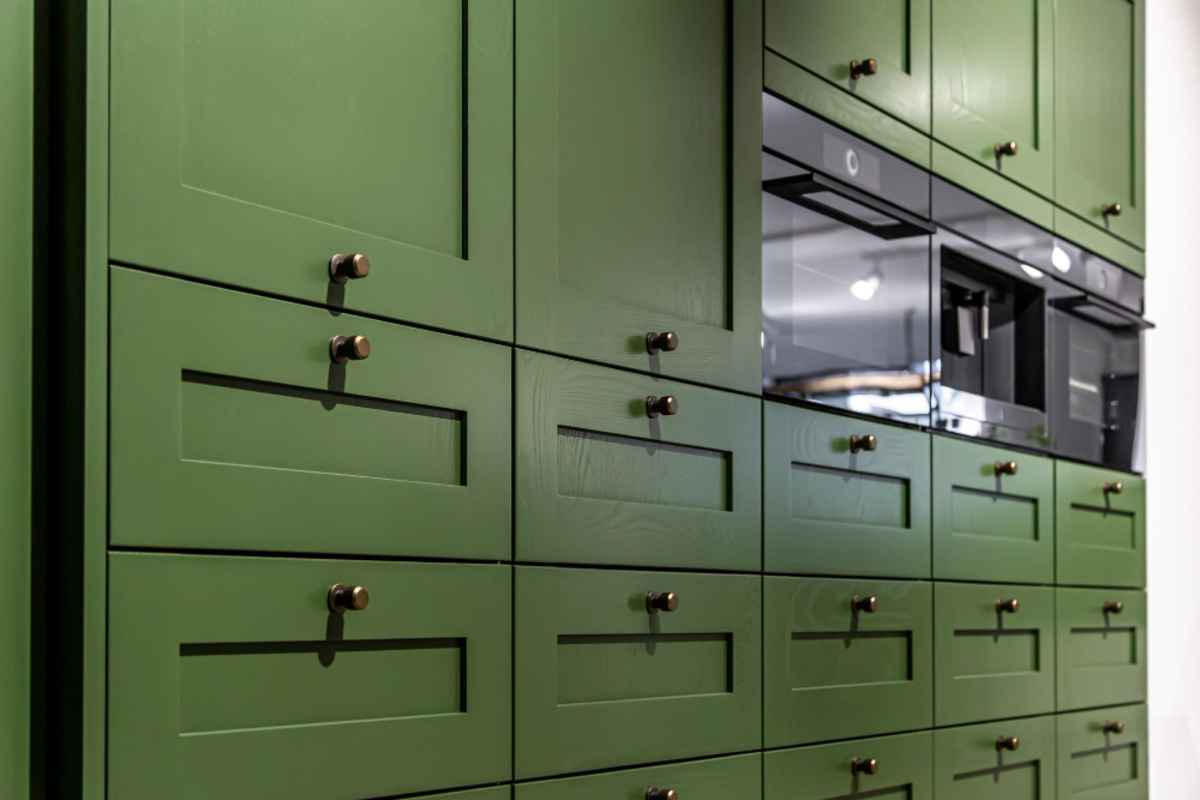In kitchen design, one often encounters the dilemma of achieving a seamless and harmonious appearance. The placement of appliances, particularly the dishwasher, plays a crucial role in determining the overall aesthetic and functionality of the kitchen space. One common question is whether the dishwasher should be flush with the cabinets. This comprehensive guide will explore the considerations, advantages, and potential drawbacks of aligning your dishwasher with your cabinets.
Table of Contents
ToggleUnderstanding the Basics
What Does “Flush with Cabinets” Mean?
Before delving into the pros and cons, let’s clarify how a dishwasher is “flush with cabinets.” When we say a dishwasher is flush with cabinets, it means that the dishwasher’s front panel aligns perfectly with the surrounding cabinetry, creating a smooth and integrated look. This design choice is often favored for its ability to maintain a cohesive appearance in modern kitchen layouts.
The Aesthetic Appeal
Seamless Integration for a Cohesive Look
One of the primary reasons homeowners opt to have their dishwasher flush with cabinets is to achieve a cohesive and streamlined appearance. This design choice allows the dishwasher to blend seamlessly with the surrounding cabinetry, creating a unified and aesthetically pleasing kitchen space.
Enhancing Kitchen Elegance with Consistency
When the dishwasher aligns with the cabinets, it contributes to a sense of consistency and elegance in the kitchen. The uniformity in design can be particularly advantageous in open-concept kitchens where the visual flow between elements is crucial for a balanced and sophisticated look.
Practical Considerations
Space Optimization and Accessibility
Should Dishwasher Be Flush with Cabinets for Optimal Space Utilization?
Aligning the dishwasher with cabinets is a practical choice for optimizing space. In smaller kitchens, where every inch matters, having the dishwasher flush with cabinets ensures no wasted space. This design approach allows for a seamless and compact kitchen layout, promoting efficient use of available space.
Accessibility and Ease of Use
Another factor to consider is the ease of use. When the dishwasher is flush with cabinets, it creates a user-friendly kitchen environment. The streamlined design eliminates any protruding edges or gaps, making it convenient for users to load and unload dishes without obstructions.
Installation Considerations
Precision in Installation
The Role of Professional Installation in Achieving a Flush Design
Achieving the desired flush look requires precision in installation. Professional installers play a crucial role in ensuring the dishwasher perfectly aligns with the cabinets. Any misalignment can compromise the aesthetic appeal and functionality of the integrated design.
Adjustability for Customized Designs
In some cases, customization may be necessary to achieve the flush design. Adjustable legs and panels can be employed to accommodate variations in cabinet height and depth. This flexibility ensures the dishwasher integrates into kitchens with diverse layouts and design elements.
Potential Drawbacks
Challenges in Repairs and Maintenance
While the seamless integration of the dishwasher with cabinets offers numerous benefits, it can present challenges during repairs and maintenance. Accessing and servicing the dishwasher may be more complex when installed flush with the cabinets. Homeowners should consider the long-term implications and potential difficulties associated with maintenance.
Aesthetic Preferences and Design Trends
Balancing Aesthetics with Personal Preferences
It’s essential to note that deciding to flush the dishwasher with cabinets is subjective. Some prefer a more traditional look with visible appliance features, while others appreciate the modern and integrated appearance. Balancing personal aesthetic preferences with current design trends is crucial in making an informed decision.
Exploring Alternatives: Dishwasher Placement Options
In pursuing a well-designed kitchen, the placement of appliances is a crucial aspect that impacts both form and function. While having a dishwasher flush with cabinets has merits, exploring alternative placement options is essential to make an informed decision based on your specific needs and preferences.
Integrated Panel Dishwashers
An increasingly popular choice is the use of integrated panel dishwashers. These appliances are designed to accept a custom panel that matches your cabinet doors, creating a cohesive and concealed appearance. This approach combines the sleekness of a flush design with the flexibility of customization. Integrated panel dishwashers allow you to maintain a seamless look while still having the option to showcase or conceal the appliance based on your aesthetic preferences.
Exposed Dishwasher Design
Contrary to the trend of hiding appliances, some homeowners embrace the exposed dishwasher design. This involves leaving the dishwasher’s front panel visible, showcasing its features, and contributing to a more industrial or traditional kitchen aesthetic. Exposed dishwashers can become a focal point, adding visual interest to the space. This option is trendy in kitchens with a rustic or eclectic design where showcasing unique appliances is part of the overall style.
Drawer Dishwashers for Compact Spaces
Drawer dishwashers offer a space-efficient alternative in kitchens where space is at a premium. These compact appliances can be installed under countertops or even in kitchen islands, providing a discreet and accessible solution. While not flush with cabinets traditionally, drawer dishwashers offer a unique integration into the kitchen layout. They are an excellent choice for those seeking a minimalist and functional design.
Considering Functionality
Accessibility and Ergonomics
Beyond aesthetics, the placement of the dishwasher can significantly impact its functionality. When deciding whether the dishwasher should be flush with cabinets, consider the ergonomic aspects of your kitchen layout. A seamlessly integrated dishwasher may enhance accessibility, but ensuring the design doesn’t compromise the ease of use is crucial. Placing the dishwasher at a comfortable height and location can create a more user-friendly kitchen environment.
Zone Planning for Efficiency
In larger kitchens, zone planning becomes crucial for optimizing workflow and efficiency. Placing the dishwasher near the sink and the storage areas for dishes and utensils ensures a logical and streamlined kitchen layout. While a flush design can contribute to this efficiency, it’s equally important to prioritize functionality and practicality in the kitchen design.
Customization and Personalization
Mix-and-Match Design Elements
Those who appreciate a mix of modern and traditional design elements should consider a mix-and-match approach. You can have certain appliances, such as the refrigerator or oven, integrated and flush with cabinets while leaving others, like the dishwasher, exposed for a more eclectic look. This lets you showcase your design preferences and create a kitchen space that reflects your unique style.
Adapting to Changing Trends
Design trends evolve, and what may be popular today might hold a different appeal in the future. When deciding on dishwasher placement, consider the longevity of the design. Opting for a more flexible design that allows for adjustments or updates in the future can ensure that your kitchen remains stylish and relevant for years to come.
Conclusion
In the quest for a well-designed and functional kitchen, deciding whether the dishwasher should be flush with cabinets is a significant consideration. The aesthetic appeal, practical advantages, and potential drawbacks must all be weighed carefully. Ultimately, achieving a seamless integration depends on the homeowner’s preferences, the kitchen layout, and the expertise of the installers. Whether you prioritize a cohesive look or value accessibility, understanding the nuances of this design choice will empower you to make an informed decision that aligns with your vision for the perfect kitchen.
Share via:







